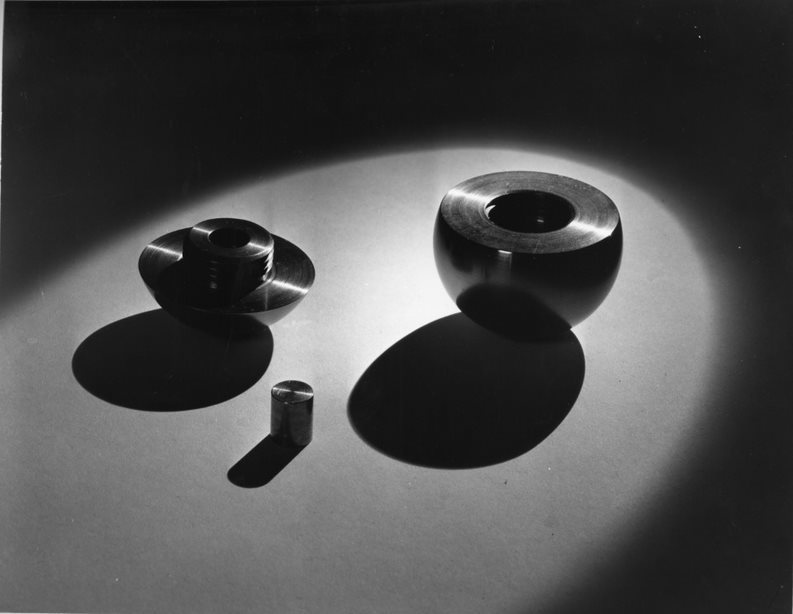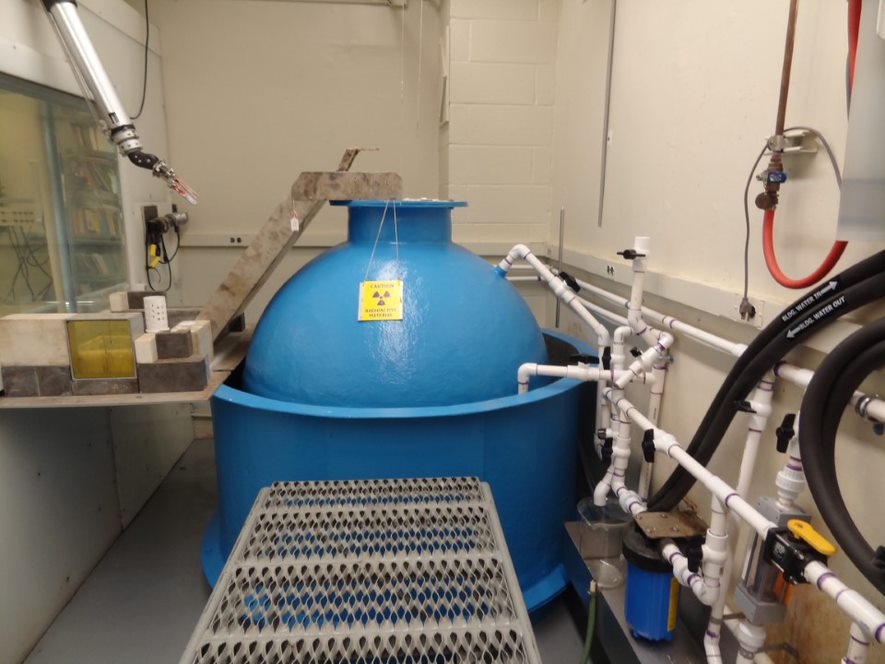Manganese Bath Facility
The manganese sulfate bath facility in Building 245 provides a method for accurately measuring the rate of neutron emissions from a radioactive source of interest. These measurements can then be used to accurately calibrate neutron sources for various applications in science and industry.
In this facility, a neutron source (often a sphere-shaped object) is surrounded by a liquid bath of pure manganese sulfate. The bath absorbs neutrons, making some of the manganese atoms radioactive. The rate of radioactive emissions from the manganese can then indicate the strength of the neutron source. The strength of the source can then be compared to that of the national primary standard neutron source, NBS-I.

NBS-I is a radium neutron source whose emission rate has been determined absolutely. NBS-I was fabricated in the late 1950s and has been in continual service ever since. NBS-I was calibrated in 1963 (radium has a half-life of 1,600 years, so the source does not need recalibration) at the Washington, D.C., site of the National Bureau of Standards (NBS, now the National Institute of Standards and Technology, or NIST) before it was transported to its current location in Gaithersburg, Maryland. The emission rate for NBS-I is approximately one million neutrons per second.

NIST’s manganese bath facility provides neutron source calibration services to commercial vendors of radioisotopic neutron sources, manufacturers of instruments and devices that monitor radiation exposure and dose for workers in the nuclear industry, secondary calibration laboratories that service the radiation monitoring instrumentation, nuclear power plants, nuclear fuel fabrication facilities, and government and private research facilities.

